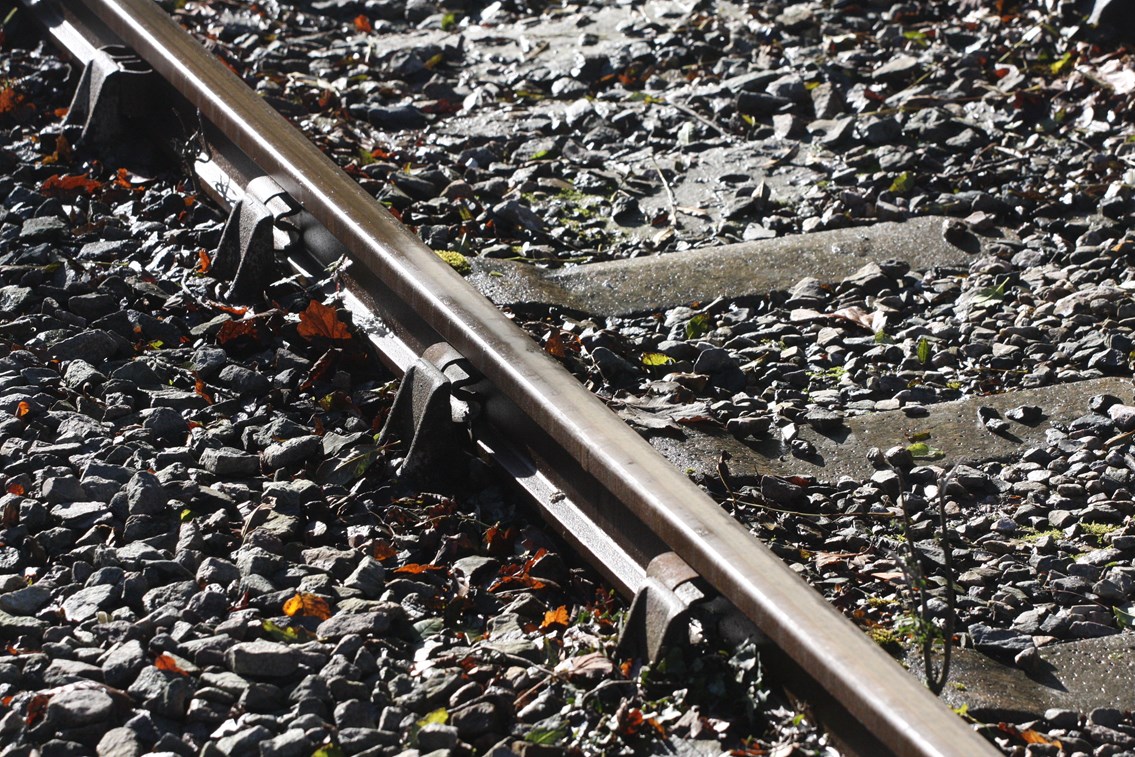Thursday 21 Nov 2013
Battery of tests proves case for building independently-powered EMU demonstrator
- Region & Route:
- National
Months of lab testing and behind the scenes work has paved the way for work to start on adapting an electric train to run on battery power.
Network Rail and its industry partners - including the Enabling Innovation Team, Bombardier and Greater Anglia - are testing the case for an independently powered electric multiple unit (IPEMU) to potentially run on short, unelectrified branch lines in otherwise electric parts of the railway.
Electric trains are quicker, quieter, and more efficient; making them better for passengers and the environment. The potential to spread those benefits while not having to put up miles of wiring would be cost-effective and sustainable.
Network Rail’s IPEMU senior engineer James Ambrose said: “It’s taken a lot of hard work to get this far. As well as testing the batteries under simulated journey conditions, we’ve needed to get the donor train gauge cleared for the routes the train has got to run on and gain a certificate of rolling stock/infrastructure compatibility.
“Now it’s over to Bombardier in Derby, who will be converting a Greater Anglia 379 to run on a test track and test the batteries further under live conditions.”
Lithium Iron Magnesium Phosphate battery technology from Valence is the first to meet the requirements of the project following testing at the Valence lab in Texas.
Other battery technologies, including hot sodium nickel salt, continue to be reviewed.
Bombardier’s IPEMU Engineering Project Manager Marc Phillips said “Developing a battery technology in close collaboration with our supplier chain and with Network Rail has underpinned progress to-date, the Lab testing put confirmation to our theoretical simulation work and the Bombardier engineering team has been extremely active in developing in parallel the necessary changes required to convert a Greater Anglia 379 to provide a test bed to allow the concept to mature on train.
"In addition to this Valence our battery supplier have embraced the requirements needed for this rail application and their knowledge and experience in applications for other industries has advanced our integration of a battery technology into this industry demonstrator.”
Kate Marjoribanks, Abellio Greater Anglia's Engineering Director, said "We're really pleased to be part of this ground-breaking project which will be taken forward using one of our Class 379 trains. To be able to run an independently powered electrical multiple unit will ultimately benefit both passengers and the environment. We look forward to seeing how this innovative project progresses."
Notes to editors
The batteries were tested under simulations designed around potential live running routes in Anglia. These included intensive branch line round trips with 8 hours of continuous running, an extreme range test, extreme performance (high speed) test and extreme temperature test.
The IPEMU project is a partnership between Network Rail, Department for Transport, Enabling Innovation Team, Greater Anglia and Bombardier.
Data gathered during the experiment will be used to determine what form any future Independently Powered Electric Multiple Unit (IPEMU) will take, be it a straight battery unit or hybrid.
This IPEMU could be used to bridge ‘gaps’ in otherwise electrified railways, or be used on branchlines where it would not be cost-effective to put up overhead wires.
*
About the Enabling Innovation Team
The Enabling Innovation Team (EIT) was set up to accelerate the uptake of innovation in the rail industry. Its mission is to offer support to practical cross-industry demonstrator projects, building on the work of the Technical Strategy Leadership Group, but also seeking out innovative ideas and proposals from across the industry. Its approach is to: understand the challenges that industry faces; connect potential innovators with these challenges; and, where necessary with funding. The EIT is funded by DfT and in the future by the HLOS. It is hosted by RSSB, reports into TSLG, and is supported by the Rail Delivery Group, Planning Oversight Group, and RSSB’s Board.
For more information on EIT, visit http://www.futurerailway.org/eit" href="http://www.futurerailway.org/eit">www.futurerailway.org/eit
Contact information
Passengers / community members
Network Rail national helpline
03457 11 41 41
Latest travel advice
Please visit National Rail Enquiries
Journalists
Network Rail press office - National
020 3356 8700
mediarelations@networkrail.co.uk
About Network Rail
We own, operate and develop Britain's railway infrastructure; that's 20,000 miles of track, 30,000 bridges, tunnels and viaducts and the thousands of signals, level crossings and stations. We run 20 of the UK's largest stations while all the others, over 2,500, are run by the country's train operating companies.
Usually, there are almost five million journeys made in the UK and over 600 freight trains run on the network. People depend on Britain's railway for their daily commute, to visit friends and loved ones and to get them home safe every day. Our role is to deliver a safe and reliable railway, so we carefully manage and deliver thousands of projects every year that form part of the multi-billion pound Railway Upgrade Plan, to grow and expand the nation's railway network to respond to the tremendous growth and demand the railway has experienced - a doubling of passenger journeys over the past 20 years.
Follow us on Twitter: @networkrail
Visit our online newsroom: www.networkrailmediacentre.co.uk

